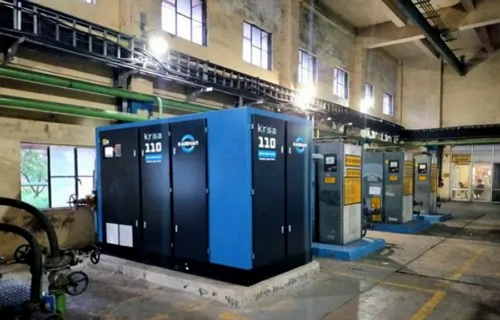Compressed Air System

Here’s a basic explanation of how a compressed air system works:
1. Air Compressor: The process begins with an air compressor, which is typically an electric motor or a combustion engine-driven device. The air compressor draws in atmospheric air and compresses it, reducing its volume and increasing its pressure. There are different types of compressors, including reciprocating compressors, rotary screw compressors, and centrifugal compressors.
2. Intake and Filtration: The air compressor pulls in air through an intake system, which usually includes an air filter to remove contaminants such as dust, dirt, and moisture. The filtration process helps protect the compressor and downstream equipment from damage.
3. Compression: The air is compressed by the compressor’s action. In a reciprocating compressor, a piston moves back and forth within a cylinder, compressing the air. In a rotary screw compressor, two interlocking helical screws rotate, squeezing and compressing the air. In a centrifugal compressor, air is accelerated by a high-speed impeller, converting kinetic energy into pressure.
4. Cooling: The compression process generates heat, so most air compressors include a cooling system to prevent overheating. This can involve air or water cooling methods, which help remove excess heat from the compressed air.
5. Air Receiver Tank: After compression, the pressurized air is typically stored in an air receiver tank, also known as an air storage tank. The tank acts as a reservoir, providing a steady supply of compressed air during peak demand periods and allowing the compressor to cycle on and off less frequently. The tank also helps to smooth out pressure fluctuations and acts as a condensate separator, allowing moisture to settle at the bottom for drainage.
6. Air Treatment: Compressed air often requires further treatment before it can be used in various applications. This may involve additional filtration to remove residual moisture, oil, and other contaminants. Air dryers are commonly used to reduce the humidity in the compressed air, preventing corrosion and damage to equipment.
7. Distribution: Once the compressed air is properly treated, it is distributed through a network of pipes or hoses to the desired points of use. Valves, regulators, and pressure gauges may be installed to control and monitor the air flow and pressure at different locations.
8. Application: The compressed air is finally used for a wide range of applications, such as powering pneumatic tools, operating machinery, providing ventilation, driving air motors, and more.
It’s worth noting that compressed air systems can vary in size and complexity depending on the specific requirements of an application. Proper maintenance, including regular inspection, lubrication, and monitoring of air quality, is essential to ensure the reliable and efficient operation of a compressed air system.
Maximize Energy, Minimize Cost!
All your profit goes into electricity bill? Especially ICPT? Talk to us and let us help you.
AIRNERGY SDN BHD
Headquarter:
18, Jalan Anggerik Mokara 31/46, Kota Kemuning Seksyen 31
40460 Shah Alam, Selangor
Sabah Branch:
Tingkat Bawah Lot 4, Blok 5 Bandar Karamunting
Jalan Karamunting, 90000 Sandakan
Phone: +603-5892 2948
Email: info@airnergy.com.my
Why Choose Us
Get 15% Discount On Your First Service! Use code “PROMO1ST”
See What Our Clients Have To Say…














